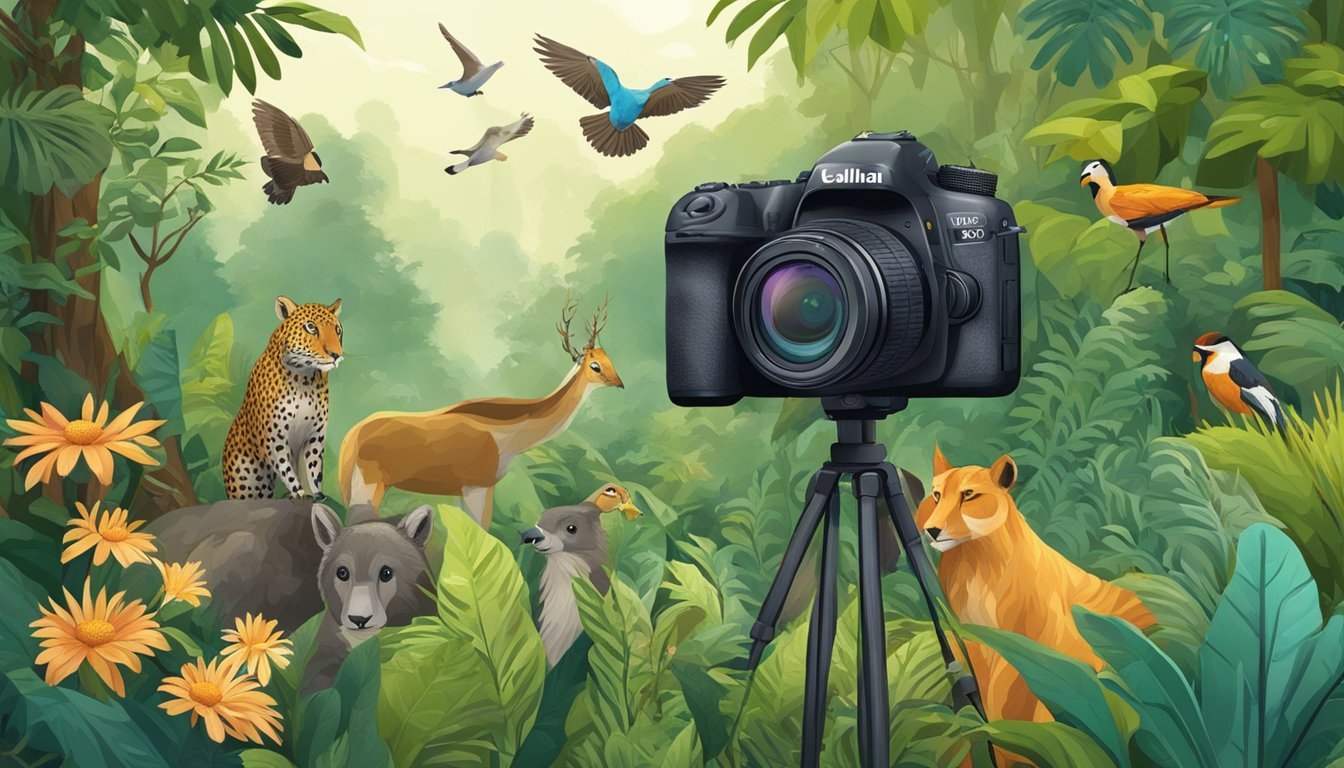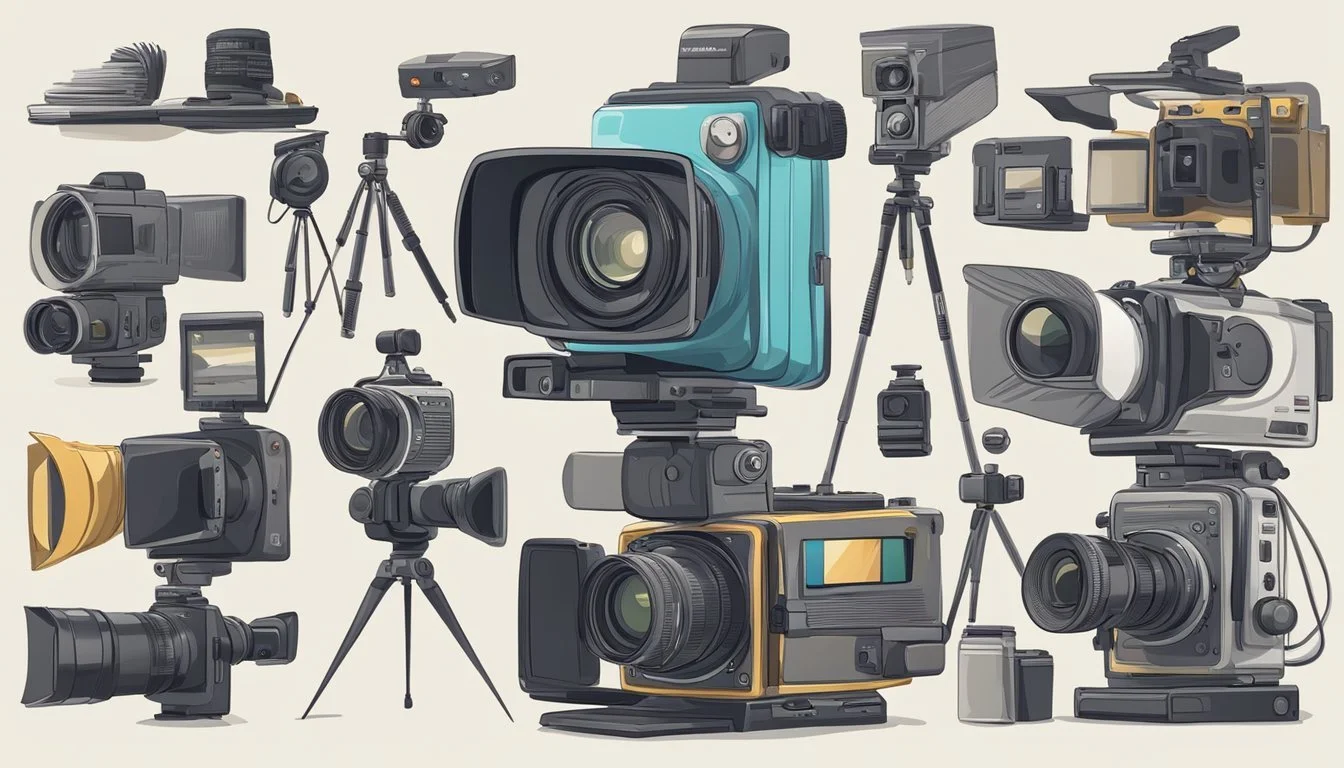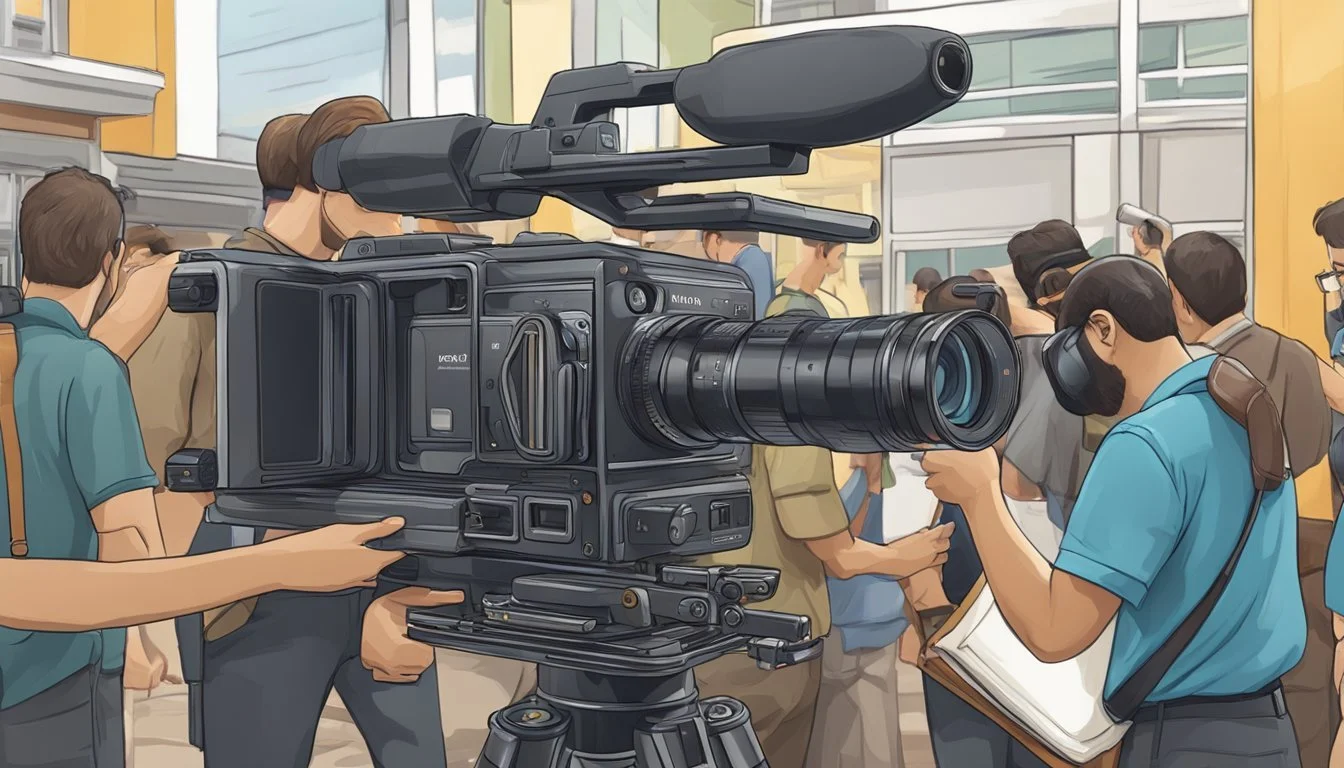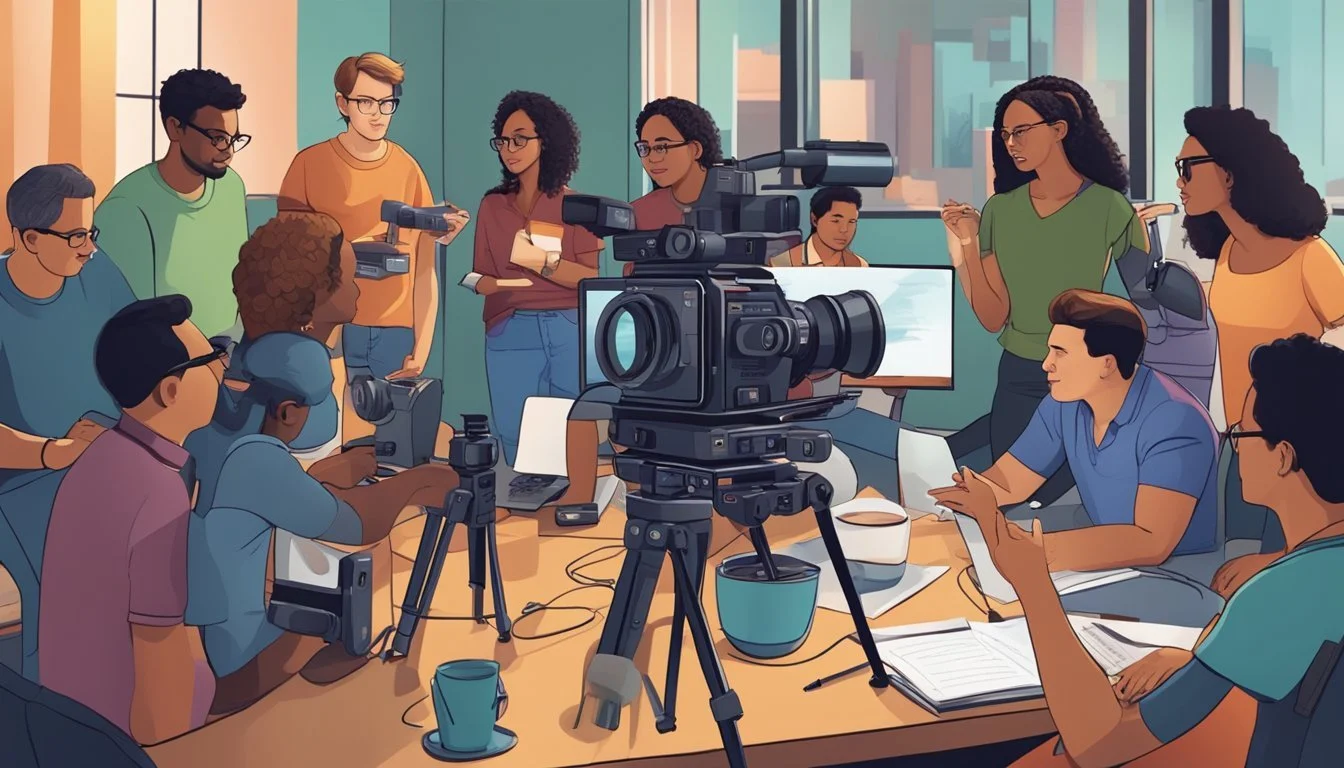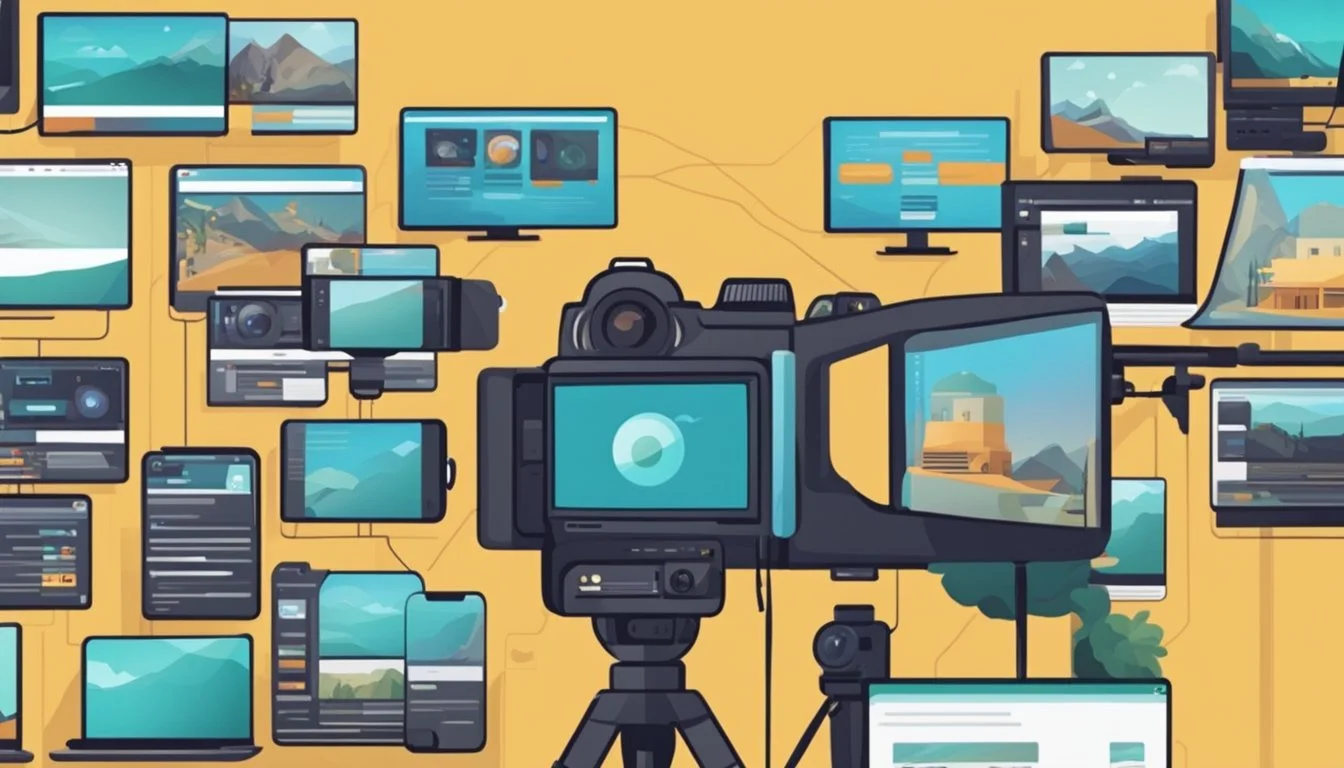Unmasking Reality: The Shocking Truth Behind Documentaries' Hidden Power
Documentaries offer viewers a window into reality through the lens of filmmakers. These nonfiction works aim to present factual information, real events, and authentic stories about people, places, or subjects. A documentary is a film or program that provides a detailed account or report on a specific topic, typically using interviews, archival footage, and narration to convey information and perspectives.
Documentaries serve various purposes, from educating audiences to raising awareness about important issues. They can explore historical events, social phenomena, scientific discoveries, or personal experiences. Unlike fictional films, documentaries strive to capture and present real-life situations, often with minimal scripting or staging.
The impact of documentaries extends beyond entertainment. These films can shape public opinion, inspire social change, and contribute to cultural discourse. By presenting facts and diverse viewpoints, documentaries encourage viewers to engage critically with the world around them, fostering a deeper understanding of complex subjects and human experiences.
The Essence and Evolution of Documentaries
Documentary films capture real-life events and stories, shaping our understanding of the world. They have evolved from early cinema experiments to powerful tools for social change and artistic expression.
Defining Documentary Film
Documentary films aim to present factual information about real people, places, and events. They often combine interviews, archival footage, and narration to explore their subjects. Unlike fiction films, documentaries strive for authenticity and truth-telling.
Key elements of documentaries include:
Non-fiction content
Real people and situations
Minimal staging or reenactments
Informative or persuasive purposes
Documentaries can take many forms, from observational to participatory, and cover a wide range of topics including history, nature, and social issues.
Historical Development
The roots of documentary film trace back to the late 19th century. Early pioneers like the Lumière brothers captured everyday scenes, laying the groundwork for non-fiction filmmaking.
In the 1920s and 1930s, documentary film emerged as a distinct genre. Filmmakers began to use the medium to explore social issues and document historical events. The advent of portable cameras and synchronous sound recording in the 1960s revolutionized documentary production.
Key milestones in documentary history:
1895: Lumière brothers' actuality films
1922: "Nanook of the North" by Robert Flaherty
1960s: Direct Cinema and Cinéma Vérité movements
Dziga Vertov and John Grierson
Dziga Vertov, a Soviet filmmaker, pioneered experimental documentary techniques in the 1920s. His film "Man with a Movie Camera" (1929) showcased innovative editing and camera work, emphasizing the power of cinema to reveal truth.
John Grierson, a Scottish filmmaker, coined the term "documentary" in the 1930s. He defined it as the "creative treatment of actuality." Grierson's work focused on social issues and helped establish documentary as an educational tool.
Both Vertov and Grierson significantly influenced documentary theory and practice:
Vertov: Emphasized the camera's ability to capture reality
Grierson: Promoted documentaries as instruments of social change
Significant Movements and Theorists
Several movements have shaped documentary filmmaking:
Direct Cinema (1960s): Emphasized observational techniques and minimal interference.
Cinéma Vérité: Embraced filmmaker participation and provocation.
Ethnographic Film: Focused on cultural documentation and anthropological studies.
Influential theorists like Bill Nichols developed frameworks for understanding documentary modes:
Expository
Observational
Participatory
Reflexive
Performative
Poetic
These modes help categorize documentaries based on their approach and style.
Comparison with Fiction Films
While fiction films create imaginary worlds, documentaries engage with reality. Key differences include:
Documentary Films Fiction Films Real events and people Scripted stories and actors Minimal staging Controlled sets and scenes Often unpredictable outcomes Planned narratives Aim for factual accuracy Focus on entertainment
Despite these differences, documentaries can employ narrative techniques and stylistic choices similar to fiction films. The line between the two can sometimes blur, especially in docudramas or hybrid forms.
Documentaries serve as important historical records, offering insights into past events and societal changes. They continue to evolve with new technologies and storytelling approaches, maintaining their power to inform, inspire, and challenge audiences.
Types and Modes of Documentaries
Documentaries employ diverse approaches to present real-world subjects. These methods shape how filmmakers convey information and engage audiences. Each type offers unique perspectives on storytelling and truth-telling through film.
Expository Documentaries
Expository documentaries aim to inform and persuade viewers. They often use a "Voice of God" narration to guide the audience through the subject matter. This style is common in historical documentaries and educational films.
Expository films rely heavily on research and factual presentation. They may incorporate interviews with experts, archival footage, and visual aids to support their arguments. The narration ties these elements together, providing context and interpretation.
Ken Burns' works exemplify this approach. His films on American history use photographs, music, and voiceovers to create compelling narratives. Television channels like History and A&E frequently produce expository documentaries to educate viewers on various topics.
Observational Documentaries
Observational documentaries take a fly-on-the-wall approach. Filmmakers strive to capture events as they unfold without intervening. This style emerged in the 1960s with the advent of portable camera equipment.
These films aim for authenticity by minimizing the crew's presence. They often lack narration or interviews, letting the subjects and situations speak for themselves. The goal is to provide an unfiltered view of reality.
Frederick Wiseman's work is emblematic of observational documentaries. His films explore institutions and communities, offering intimate portraits of everyday life. This approach can reveal subtle dynamics and behaviors that might be missed in more structured formats.
Participatory Documentaries
Participatory documentaries involve the filmmaker as an active participant in the story. The director may appear on camera, interact with subjects, or shape events through their presence. This style acknowledges the filmmaker's influence on the documentary process.
These films often feature interviews and conversations between the filmmaker and subjects. They can provide unique insights by capturing spontaneous moments and reactions. The director's personal journey may become part of the narrative.
Michael Moore's documentaries exemplify the participatory approach. He frequently appears on screen, engaging in confrontations and stunts to make his points. This style can be provocative and entertaining, but it also raises questions about objectivity and manipulation.
Poetic Documentaries
Poetic documentaries prioritize mood, tone, and visual associations over linear narratives. They often use experimental techniques to create emotional or aesthetic experiences. These films may blur the line between documentary and avant-garde cinema.
Visuals, music, and editing play crucial roles in poetic documentaries. They may eschew traditional storytelling in favor of impressionistic or abstract representations. The goal is to evoke feelings and ideas rather than convey specific information.
Godfrey Reggio's "Koyaanisqatsi" is a prime example of poetic documentary. It uses striking imagery and Philip Glass's music to explore the relationship between humans, nature, and technology. Poetic documentaries challenge viewers to interpret meaning through sensory and emotional engagement.
Reflexive Documentaries
Reflexive documentaries draw attention to the filmmaking process itself. They question the conventions of documentary storytelling and the relationship between filmmaker, subject, and audience. These films often incorporate meta-commentary on the nature of truth and representation in media.
Techniques used in reflexive documentaries may include showing the crew, revealing editing choices, or discussing the ethical dilemmas of filmmaking. They encourage viewers to think critically about how documentaries shape our understanding of reality.
Trinh T. Minh-ha's "Reassemblage" exemplifies the reflexive approach. It challenges traditional ethnographic filmmaking by highlighting the filmmaker's role in constructing narratives about other cultures. Reflexive documentaries prompt audiences to question their assumptions about documentary "truth."
Performative Documentaries
Performative documentaries emphasize subjective experience and emotional impact. They often blend factual presentation with artistic expression or personal reflection. These films may use dramatic reenactments, stylized visuals, or unconventional narrative structures.
Filmmakers in this mode may share their own stories or use performance to illustrate broader themes. The goal is to create a powerful, often visceral connection between the subject matter and the audience. Performative documentaries can be particularly effective in exploring identity, memory, and cultural experiences.
Marlon Riggs' "Tongues Untied" is a notable performative documentary. It combines poetry, personal testimony, and staged scenes to examine the experiences of gay Black men. This approach allows for a more nuanced and emotionally resonant exploration of complex subjects.
Documentary Form and Style
Documentary filmmaking combines artistic vision with factual representation. The form and style of documentaries shape how real-world events and subjects are presented to audiences.
Narrative and Structure
Documentaries employ various narrative structures to tell their stories. Some follow a linear chronology, while others use non-linear approaches. Expository documentaries often use narration to guide viewers through information and events. Observational documentaries may avoid narration, letting events unfold naturally on screen.
Many documentaries blend different narrative techniques. They might incorporate interviews, archival footage, and reenactments to build a compelling storyline. The structure can be episodic, thematic, or character-driven, depending on the filmmaker's goals.
Cinematic Techniques
Documentary filmmakers use a range of cinematic techniques to capture reality and convey their message. Handheld camera work often creates an immediate, raw feel. Static shots can emphasize stability or create a sense of detachment.
Lighting choices impact mood and atmosphere. Natural lighting enhances authenticity, while controlled lighting can dramatize scenes. Framing and composition guide viewer attention and create visual interest.
Some documentaries employ creative visual effects or animation to illustrate concepts or historical events. These techniques can make complex ideas more accessible or bring past events to life.
The Role of Music and Sound
Music and sound play crucial roles in documentary storytelling. Original scores can evoke emotions, build tension, or provide tonal consistency. Carefully chosen songs may underscore themes or historical context.
Sound design enhances the viewing experience. Ambient sounds create a sense of place. Sound effects can emphasize key moments or transitions. The mix of dialogue, music, and environmental sounds shapes the audience's emotional response.
Some documentaries use silence strategically to create impact or allow for reflection. Others rely heavily on voiceovers to deliver information or personal perspectives.
Editing and Pacing
Editing is a powerful tool in documentary filmmaking. It shapes the narrative flow and determines how information is revealed. Quick cuts can create energy or urgency. Longer takes allow events to unfold naturally.
Cross-cutting between different storylines or time periods can reveal connections or contrasts. Montage sequences efficiently convey large amounts of information or passage of time.
Pacing varies based on subject matter and style. Observational documentaries often have a slower pace, allowing viewers to immerse themselves in a situation. Investigative documentaries might use faster pacing to maintain suspense.
Transitions between scenes impact the overall rhythm. Hard cuts can create abrupt shifts, while fades or dissolves suggest gentler progressions or thematic links.
The Function of Documentary Film
Documentary films serve multiple purposes in society. They educate, raise awareness, and capture real human experiences.
Educational and Teaching Tool
Documentary films are powerful educational instruments. They present complex topics in accessible ways, allowing viewers to learn about subjects they might otherwise find challenging. These films often incorporate expert interviews, archival footage, and visual aids to explain concepts clearly.
Documentaries can supplement traditional classroom learning. Teachers use them to illustrate historical events, scientific phenomena, and social issues. For example, nature documentaries bring distant ecosystems into focus, while historical documentaries transport viewers to past eras.
The visual and narrative aspects of documentaries make information more engaging and memorable than textbooks alone. This format helps viewers retain knowledge and develop a deeper understanding of the subject matter.
Social Commentary and Advocacy
Documentaries often tackle pressing social issues. Filmmakers use this medium to shed light on injustices, environmental concerns, and human rights violations. They present facts, personal stories, and expert opinions to inform and inspire action.
These films can spark public discourse and influence policy changes. By exposing problems and proposing solutions, documentaries become catalysts for social change. They give voice to marginalized communities and bring hidden issues to the forefront of public consciousness.
Advocacy documentaries aim to motivate viewers to take action. They might encourage donations to causes, changes in consumer behavior, or political engagement. The emotional impact of well-crafted documentaries can be a powerful force for social transformation.
Documenting the Human Experience
Documentary films capture real-life stories and preserve them for future generations. They record significant events, cultural practices, and personal narratives that might otherwise be lost to time. This documentation creates a visual historical record.
These films often focus on ordinary people facing extraordinary circumstances. By sharing intimate portraits of individuals, documentaries foster empathy and understanding among viewers. They bridge cultural divides and reveal our shared humanity.
Documentaries exploring the human experience can cover a wide range of topics. From the daily lives of remote tribes to the struggles of urban communities, these films offer windows into diverse worlds. They celebrate human resilience, creativity, and the complexity of the human condition.
Documentary Filmmakers and Their Impact
Documentary filmmakers shape our understanding of the world through their unique perspectives and storytelling techniques. Their work illuminates important issues, challenges assumptions, and captures real-life events with depth and nuance.
Ken Burns and the Art of Storytelling
Ken Burns revolutionized documentary filmmaking with his distinctive style. His use of archival footage, photographs, and expert interviews brings historical events to life. Burns' technique, known as the "Ken Burns effect," involves slowly panning and zooming on still images to create a sense of motion.
Notable works include:
"The Civil War" (1990)
"Baseball" (1994)
"Jazz" (2001)
Burns' documentaries often span multiple episodes, allowing for in-depth exploration of complex topics. His approach combines meticulous research with emotional storytelling, making history accessible to broad audiences.
Michael Moore and Provocative Perspectives
Michael Moore is known for his confrontational style and politically charged documentaries. He often uses humor and satire to address serious social issues.
Key characteristics of Moore's work:
Personal narration
Ambush interviews
Juxtaposition of contrasting footage
Notable films:
"Roger & Me" (1989)
"Bowling for Columbine" (2002)
"Fahrenheit 9/11" (2004)
Moore's documentaries spark debate and controversy, encouraging viewers to question established narratives and power structures.
Frederick Wiseman's Observational Style
Frederick Wiseman pioneered the observational or "fly-on-the-wall" approach to documentary filmmaking. His work focuses on institutions and social systems, offering unnarrated glimpses into their inner workings.
Wiseman's technique:
No interviews or voiceovers
Long, uninterrupted scenes
Minimal editing
Notable documentaries:
"Titicut Follies" (1967)
"High School" (1968)
"Public Housing" (1997)
Wiseman's films require active viewer engagement, as they present raw footage without explicit commentary or interpretation.
Pare Lorentz and Social Concerns
Pare Lorentz, known as "FDR's filmmaker," created influential documentaries during the Great Depression. His work highlighted social and environmental issues, advocating for government intervention.
Lorentz's style:
Poetic narration
Dramatic music
Striking visuals
Key films:
"The Plow That Broke the Plains" (1936)
"The River" (1938)
Lorentz's documentaries combined artistry with social commentary, demonstrating the medium's potential for raising awareness and inspiring change. His work set a precedent for using film as a tool for social advocacy.
Documentaries in Modern Media
Documentaries have evolved significantly in recent years, adapting to new platforms and formats. Their influence continues to grow as they reach wider audiences through diverse distribution channels.
Television and Streaming Platforms
Streaming services have revolutionized documentary distribution. Netflix, Hulu, and Amazon Prime offer extensive libraries of documentary content, making it more accessible than ever before.
These platforms have also invested heavily in original documentary productions. This has led to an increase in high-quality, well-funded documentaries reaching global audiences.
Television networks continue to play a crucial role in documentary broadcasting. Channels like PBS, BBC, and National Geographic remain dedicated to airing thought-provoking documentaries.
Feature-Length vs. Short Documentaries
Feature-length documentaries typically run 90 minutes or longer and offer in-depth explorations of their subjects. They often premiere at film festivals and can achieve theatrical releases.
Short documentaries, usually under 40 minutes, have gained popularity in the digital age. These concise films are well-suited for online viewing and social media sharing.
Many documentary filmmakers now create both long and short versions of their projects. This allows them to cater to different audience preferences and attention spans.
The Rise of Documentary Television
Documentary television series have become increasingly popular. Shows like "Planet Earth" and "Making a Murderer" have captivated audiences with their episodic format.
These series allow for more comprehensive coverage of complex topics. They can explore multiple angles and storylines over several episodes.
Documentary television often blends entertainment with education. This approach has helped attract viewers who might not typically seek out traditional documentaries.
Streaming platforms have embraced the documentary series format. Many now produce multi-part documentaries as original content, further blurring the lines between TV and film.
Content and Legality in Documentaries
Documentary filmmakers must navigate complex ethical and legal considerations while striving for accuracy and authenticity. They face challenges in obtaining permissions, using archival materials, and protecting subjects' rights.
Accuracy and Ethical Filmmaking
Documentary filmmakers have a responsibility to present accurate information. They must thoroughly research their subjects and verify facts before inclusion. Ethical considerations extend to the treatment of interviewees and the portrayal of events.
Filmmakers should avoid manipulating footage or taking statements out of context. They must balance creative storytelling with factual representation. Transparency about methods and sources enhances credibility.
Ethical documentarians seek informed consent from participants. They explain potential impacts of involvement and respect requests for anonymity or non-participation.
Legal Issues and Rights
Documentarians must navigate various legal concerns. These include defamation, invasion of privacy, and copyright infringement. Filmmakers should consult legal experts to ensure compliance with applicable laws.
Obtaining releases from subjects and location owners is crucial. These documents protect filmmakers from potential lawsuits. Rights of publicity must be considered when featuring public figures.
Some topics may require extra caution. Films about ongoing legal cases or sensitive political issues often face additional scrutiny. Filmmakers must be prepared to defend their work if challenged.
Archival Footage and Attribution
Archival footage is a valuable tool for documentarians. It provides historical context and visual evidence. However, using such material comes with legal and ethical obligations.
Filmmakers must secure proper licenses for copyrighted footage. They should negotiate fair use when applicable. Proper attribution is essential, crediting sources in the film or end credits.
Some archives may impose restrictions on usage. Documentarians should carefully review agreements before incorporating footage. They must also consider the original context of archival material to avoid misrepresentation.

